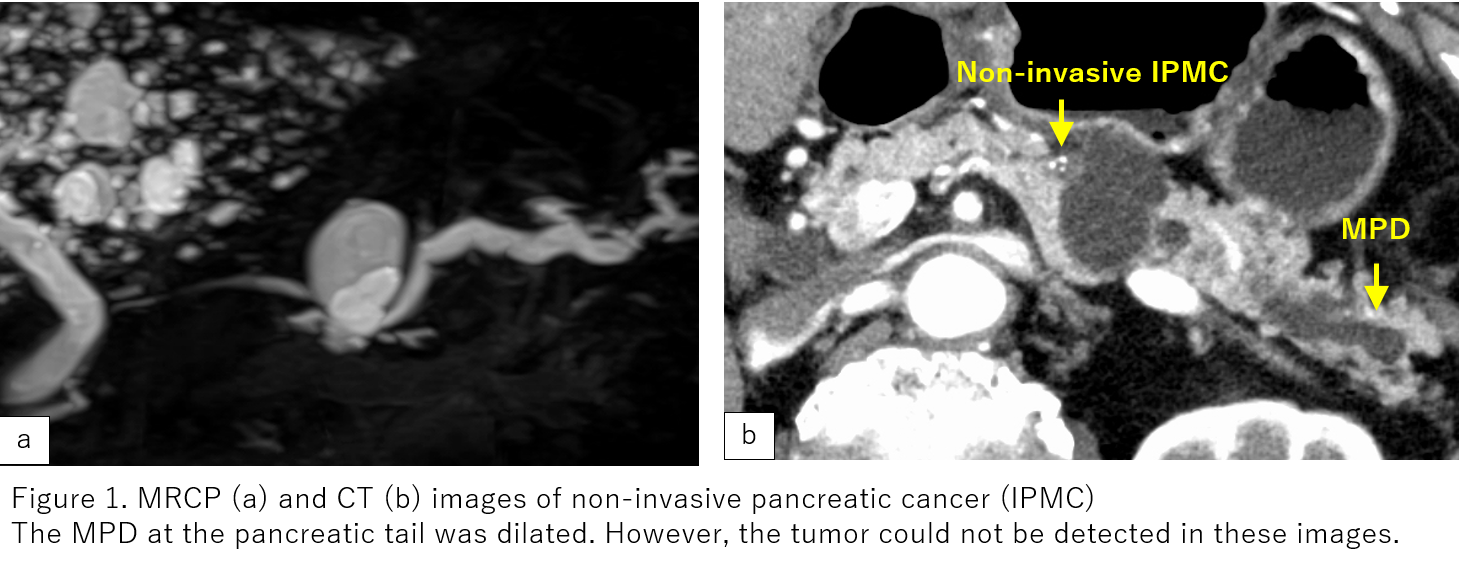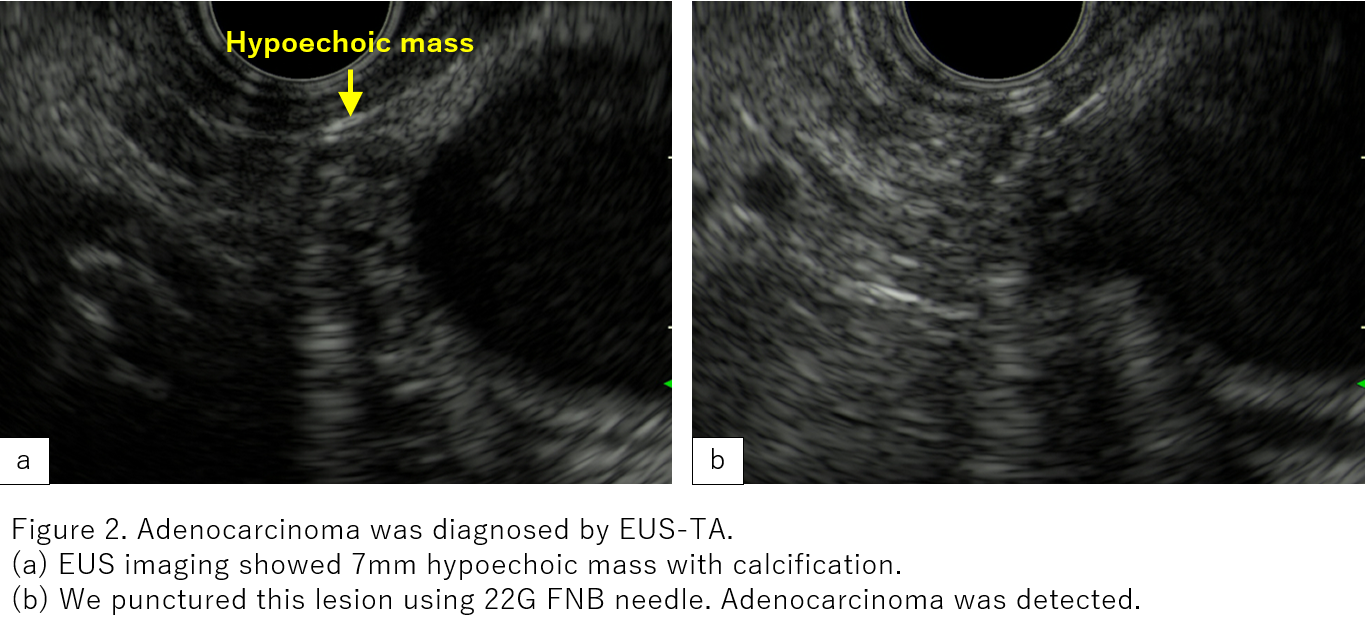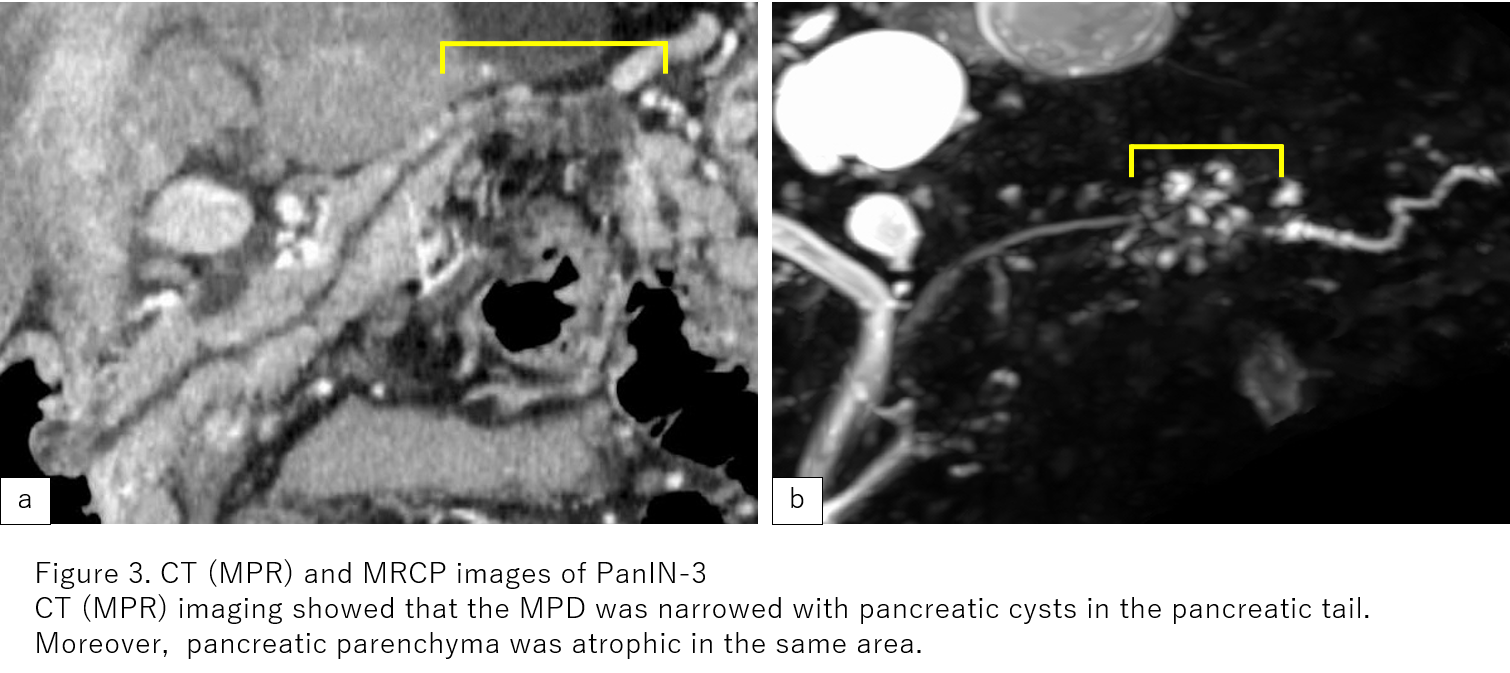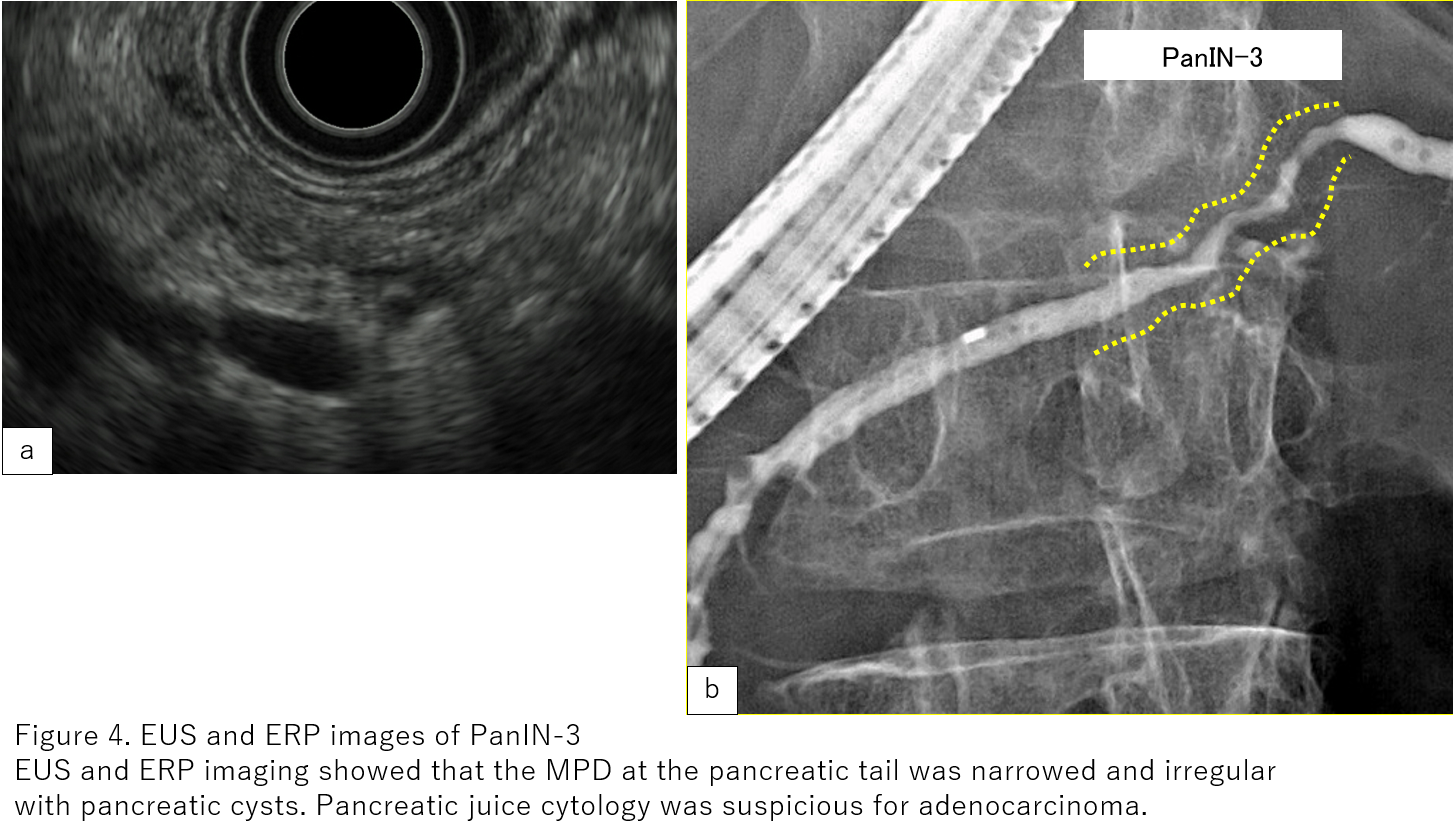Challenges in diagnosing early-stage pancreatic cancer
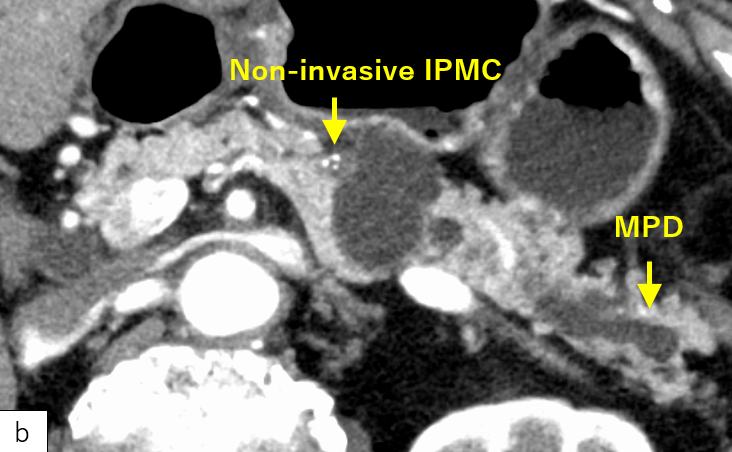
Yoshikuni Nagashio
2024/1/22
In order to improve the outcome of pancreatic cancer treatment, it is important to accurately diagnose pancreatic tumors at a smaller level in addition to developing new drugs and other treatments. Early-stage pancreatic cancer with a promising long-term prognosis by surgical resection is said to be a tumor less than 1 cm in diameter. However, most pancreatic tumors smaller than 1 cm in diameter cannot be detected by CT or MRI. To diagnose early-stage pancreatic cancer in which the tumor itself cannot be detected by CT or MRI, we focus on the indirect findings of pancreatic cancer such as stenosis/dilation of the main pancreatic duct and atrophy of the pancreatic parenchyma. Using endoscopic ultrasonography (EUS), we examine the pancreas for early-stage pancreatic cancer, including areas where these findings are present.
EUS is an endoscope with a high-resolution ultrasound tip. If a tumor can be visualized by EUS, EUS- guided tissue acquisition (EUS-TA) is performed to confirm the diagnosis. In cases of suspected early-stage pancreatic cancer in which the tumor cannot be visualized by EUS, endoscopic retrograde cholangiopancreatography (ERCP) is used to diagnose early-stage pancreatic cancer.
